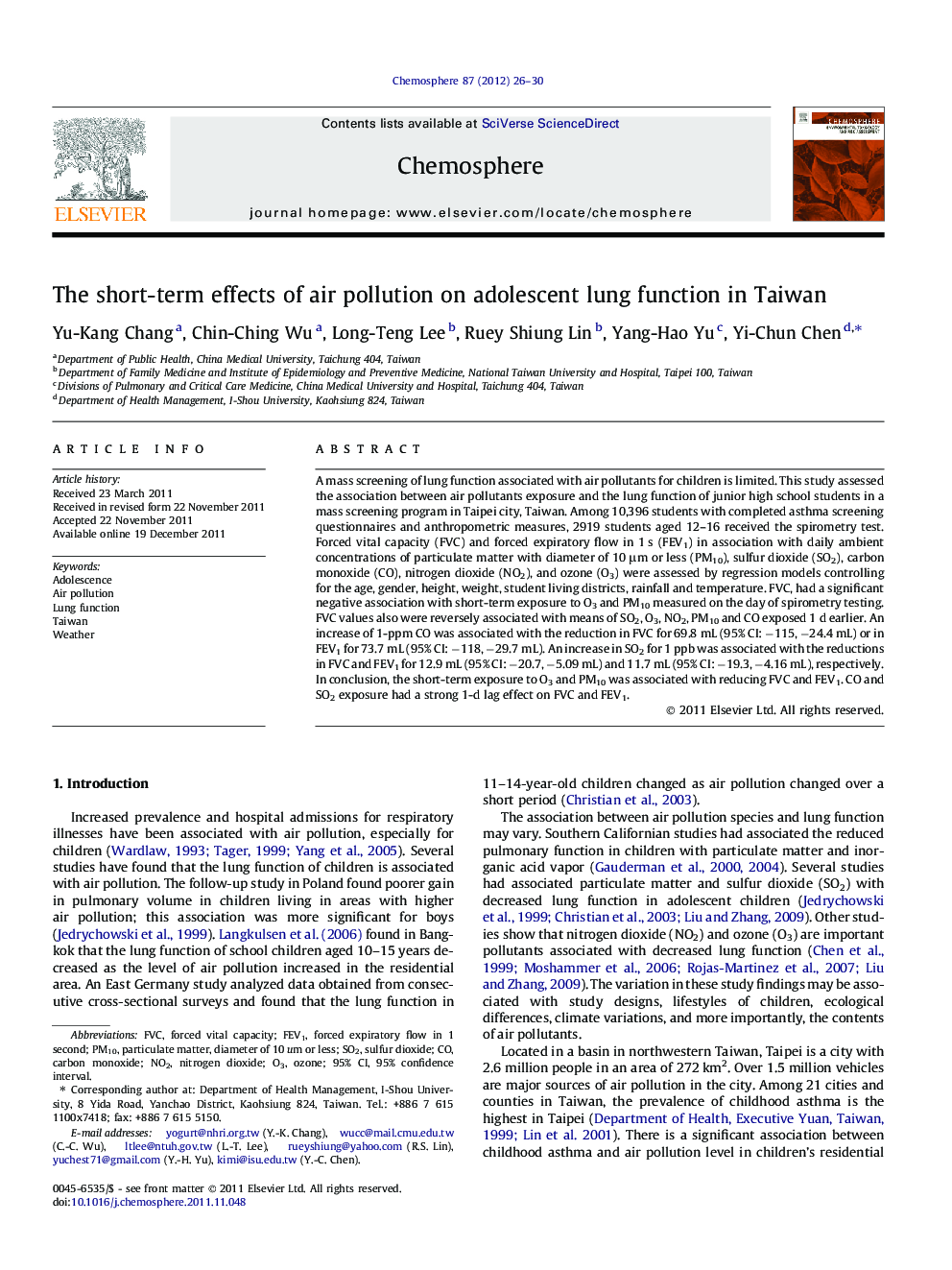| Article ID | Journal | Published Year | Pages | File Type |
|---|---|---|---|---|
| 4410434 | Chemosphere | 2012 | 5 Pages |
A mass screening of lung function associated with air pollutants for children is limited. This study assessed the association between air pollutants exposure and the lung function of junior high school students in a mass screening program in Taipei city, Taiwan. Among 10,396 students with completed asthma screening questionnaires and anthropometric measures, 2919 students aged 12–16 received the spirometry test. Forced vital capacity (FVC) and forced expiratory flow in 1 s (FEV1) in association with daily ambient concentrations of particulate matter with diameter of 10 μm or less (PM10), sulfur dioxide (SO2), carbon monoxide (CO), nitrogen dioxide (NO2), and ozone (O3) were assessed by regression models controlling for the age, gender, height, weight, student living districts, rainfall and temperature. FVC, had a significant negative association with short-term exposure to O3 and PM10 measured on the day of spirometry testing. FVC values also were reversely associated with means of SO2, O3, NO2, PM10 and CO exposed 1 d earlier. An increase of 1-ppm CO was associated with the reduction in FVC for 69.8 mL (95% CI: −115, −24.4 mL) or in FEV1 for 73.7 mL (95% CI: −118, −29.7 mL). An increase in SO2 for 1 ppb was associated with the reductions in FVC and FEV1 for 12.9 mL (95% CI: −20.7, −5.09 mL) and 11.7 mL (95% CI: −19.3, −4.16 mL), respectively. In conclusion, the short-term exposure to O3 and PM10 was associated with reducing FVC and FEV1. CO and SO2 exposure had a strong 1-d lag effect on FVC and FEV1.
► A mass survey for adolescent respiratory health was conducted in Taiwan. ► We investigated the association between lung function and air pollution levels. ► The short-term exposure to O3 and PM10 was associated with reducing FVC and FEV1. ► CO and SO2 exposure had a stronger 1-d lag effect on FVC and FEV1.
